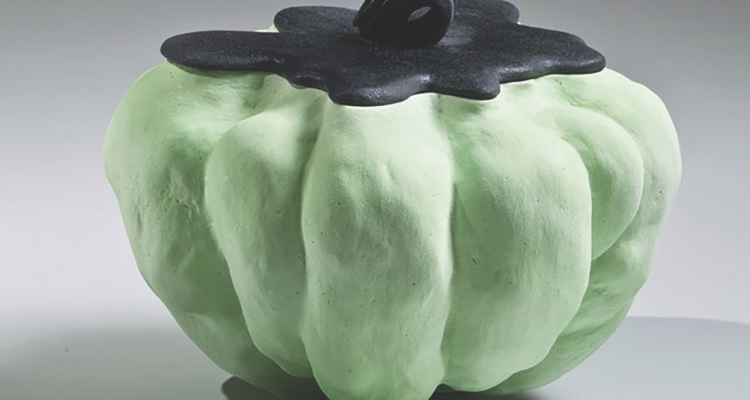Cake. Dragons. Pumpkins? With so many different colors, textures and appearances, visitors to the “Mizusashi: Japanese Water Jars” exhibit may have the question, “What are these jars made for?”
In Japanese culture, mizusashi water jars are used in the ceremony of Chanoyu, formal tea drinking. In Chanoyu, hosts prepare bowls of tea by mixing together green tea and hot water from a kettle, and the mizusashi jars hold the hot water used to refill the kettle. As art historian Andrew L. Maske of the University of Kentucky writes in the exhibit guidebook, practitioners of Chanoyu place “an emphasis on harmonious feeling between host and guests.” The lively tones of the water jars, ranging from bright and fiery reds to cool, relaxing blues and pale whites, promote this positive and harmonious feeling.
Sixteen different artists from the early 20th century to the present showcase their work in this exhibit. Artists such as Kiyomizu Rokubei VI combine traditional Japanese ceramic styles with more modern ones. One of my favorite pieces is Rokubei VI’s “Water Jar with Kokisai” (1978), because its golden hues remind me of spring and its slightly curved basket-like shape reminds me of childhood where children collect candy for Halloween and Easter baskets. “Kokisai” is Rokubei’s own technique to create the subtle browns and autumnal, muted reds inspired by antique artists. Before the late 16th century, many traditional Japanese ceramics possessed a “natural ash glaze,” where silica and other minerals would melt into patches of glassy color as a result of wood firing processes. Rokubei also shows the influence of abstract expressionist art with his bright, gold leaf-like creations layered atop the browns and reds. Modern meets antique in one water jar! I also really love artists like Katsumata Cheiko, Koie Ryoji and Miwa Kazuhiko, who depart from traditional Japanese ceramics and experiment with bright colors and bold designs. In Cheiko’s “Akoda (Pumpkin-shaped) Water Jar,” (2015), the color – a bright celadon green – is exciting and soothing at the same time, and it’s shaped like a realistic, perfectly imperfect pumpkin. In Ryoji’s “Kohiki-glazed Water Jar “ (2008), a mischievous dragon seems to peer out at you from behind a stone wall, and in Kazuhiko’s “Enza (Deep Meditation)” (2015), a chocolate cake with layers of decadent vanilla frosting morphs into both a dragon and a pumpkin when viewed from different angles. “Mizusashi: Japanese Water Jars” from the Carol and Jeffrey Horvitz Collection can be seen in the Bellarmine Hall Galleries until December 14, 2018. You might find yourself wanting to drink some tea…


Leave a Reply